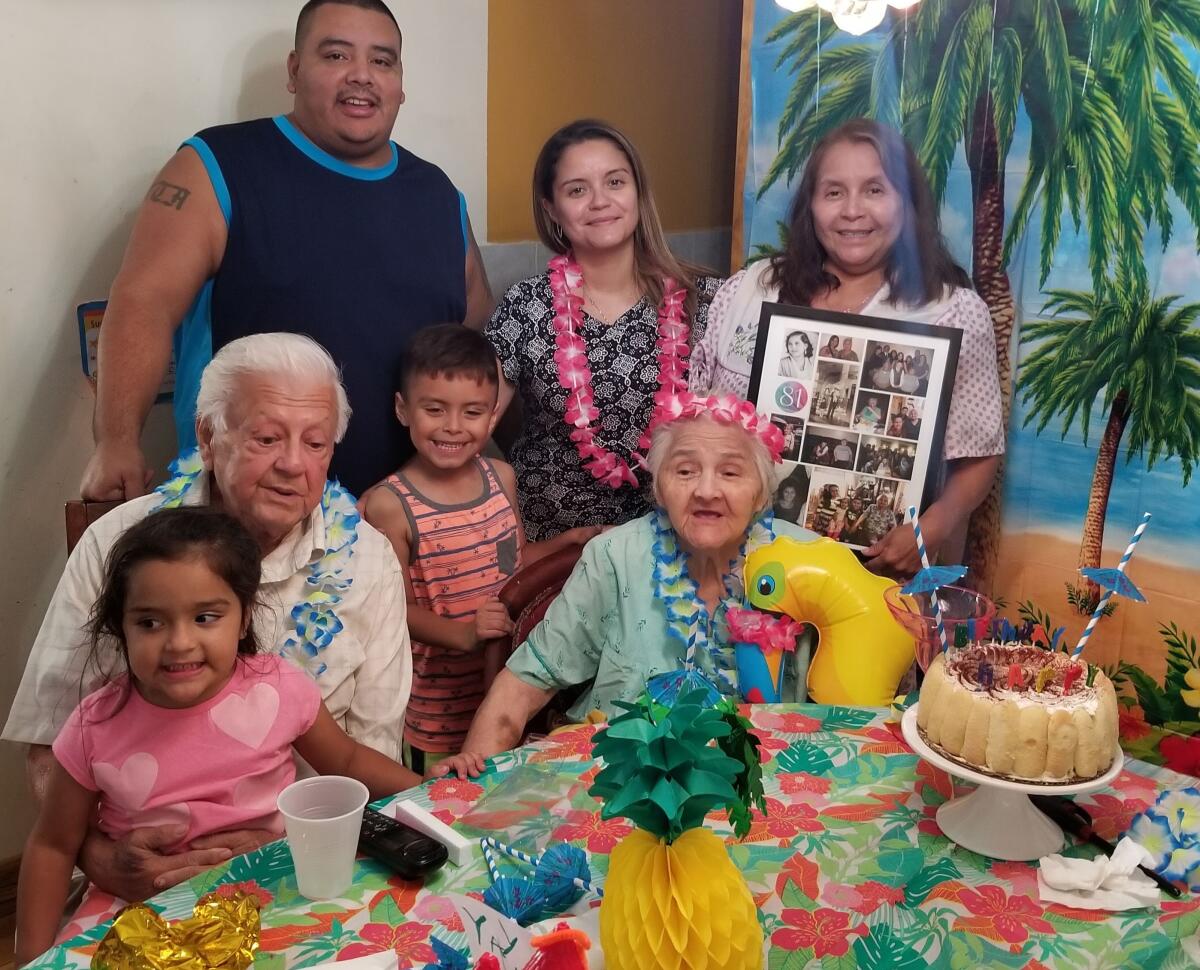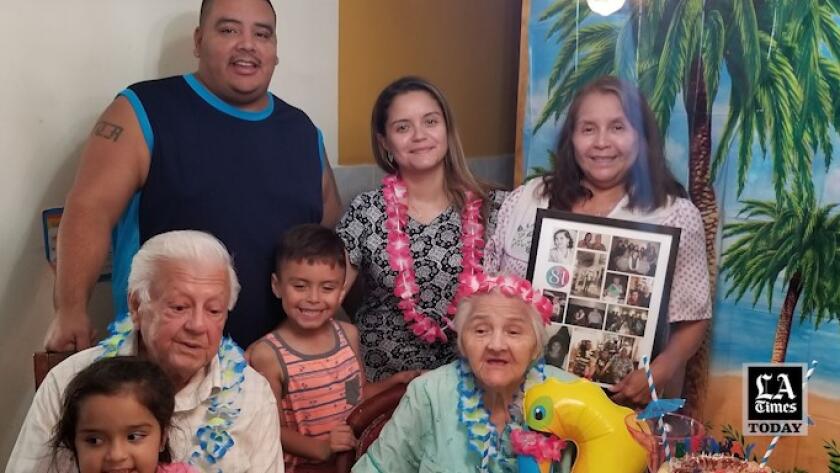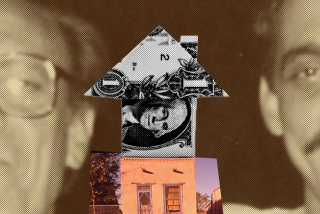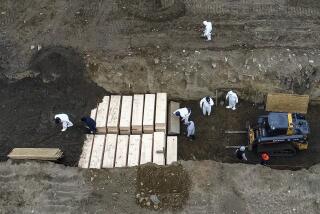COVID-19 is robbing Latino community of a secret weapon behind their success: grandparents

WASHINGTON — COVID-19’s relentless death toll is robbing the Latino community of what has long been viewed as a secret weapon behind its impressive growth and rising prosperity: grandparents.
Multigenerational households have played an especially important role in helping Latinos as they’ve grown into California’s largest ethnic group and the second-largest in the nation.
Elder Latinos, who are more likely than average to remain in the workforce past retirement age, often provide an additional income to the shared household.
And even when retired, grandparents supply much-needed child care, carpooling, cooking and other assistance to their families, reducing expenses for the broader household and freeing other adults to work longer hours and earn more.
But Latinos age 55 and older have died from COVID-19 at a disproportionately higher rate than white, Black and Asian people, according to the Centers for Disease Control and Prevention.
In fact, after long enjoying an overall lower mortality rate than the white population, Latinos all but lost that edge in California and some other states, due largely to pandemic casualties, research shows.
And it’s not just a loss of grandparents. COVID-19 took a toll on uncles, aunts, older children and others who had played vital roles in helping especially lower-income, multigenerational Latino households leverage themselves upward.
Although the death of seniors has been devastating to all population groups, the effect on Latinos of losing these beloved and vital contributors has caused outsize damage and could ripple through the community — emotionally and economically — for years to come.
“What we see is a domino effect,” said Maria Cadenas, executive director of Ventures, a nonprofit organization that helps Latino working-class families in California’s Central Coast. “Because its impact is not only a lack of income.”
For Latino households, the premature loss of a grandparent often means “all of sudden they have to work more, have to find alternative ways of child care, alternative ways of transportation to work,” Cadenas said. “We’re talking about economic stability and economic mobility.”
Tobias Noboa, a retired taxi driver and immigrant from Ecuador, was the patriarch of a seven-person, four-generation household in Queens, N.Y., when COVID-19 entered their home in April 2020.
In a matter of weeks, the white-haired Tobias — always so robust — died at age 82.
Before that, “he was driving, cooking, taking care of the kids, helping his wife,” said his granddaughter Shyvonne Noboa, 41, a social worker. “He was an active person.”
Tobias played an essential caretaker role in the household. He looked after his bedridden wife of 62 years, Juana, changing diapers and administering insulin shots.
He also helped with the day-to-day rearing of his two great-grandchildren — Lincoln, now 9, and the youngest of the family, Shea, 7.
“From the moment they got up, he would feed her breakfast. They played ball together. From sunrise to sunset, they were literally inseparable — two peas in a pod,” Shyvonne said.
In addition to the emotional pain and grief, Tobias’ death hollowed the Noboa household structure.
To take care of the ailing Juana, Shyvonne’s mother Janet Noboa now must step up her retirement plans from a hospital concierge job.
Shyvonne, her boyfriend Wilson Toala and their two children have since moved out of the household to their own apartment — to get a fresh start and some distance from the painful memories of Tobias.
“My grandpa was energetic, active and brought such warmth and love to our lives,” Shyvonne said. “COVID changed and took all that away.”
Watch L.A. Times Today at 7 p.m. on Spectrum News 1 on Channel 1 or live stream on the Spectrum News App. Palos Verdes Peninsula and Orange County viewers can watch on Cox Systems on channel 99.
For tightknit, lower-income family structures, the loss of a grandparent can be particularly devastating, making “it difficult for households to keep making progress,” said Arturo Bustamante, a UCLA professor of health policy and management who has been studying the pandemic’s effects on Latinos.
“Now COVID is another factor that threatens economic security,” he said.
COVID-19 deaths, now surpassing 1 million in the United States, struck Latinos at a higher rate partly because they are more likely to work in jobs that cannot be done remotely and often have a greater risk of exposure to the coronavirus.
That included older Latinos, who statistically remain in the workforce longer than most. About 42% of Latinos who are 55 and older were either working or looking for a job in 2021, compared with about 38% for all people over 55, according to the Bureau of Labor Statistics.
Other factors making Latino seniors more vulnerable to the pandemic included their higher likelihood of living in the same multigenerational households that had long worked to their advantage.
Analyzing Census Bureau figures, the National Research Center on Hispanic Children & Families found that 15% of Latino children in the U.S. live with grandparents, compared with 12% for all children.
Often younger household members have inadvertently exposed older ones to the virus, which appeared to be the case for the Noboas.
Latinos in the country unlawfully also sometimes lack adequate health insurance coverage, which prevented many from seeking treatment to COVID-19.
The pandemic marked a remarkable reversal of fortune for the community. Before COVID-19, Latinos in the U.S. drew admiration for their relative health and longevity, despite having less education and lower annual incomes on average.
In 2019, Latino adults 65 and over had an overall death rate 28.7% lower than white adults. But in the first year of the pandemic, that edge dropped to 10.5%, according to research by Marc Garcia of Syracuse University and Rogelio Sáenz at the University of Texas San Antonio.
In a forthcoming paper, Garcia and Sáenz write that the gap in California’s overall death rate for Latinos age 45 and older — 23% lower than for the same age group of white adults in 2019 — had completely disappeared as of last year.
It remains to be seen whether the Latino mortality advantage in states like California will return, but scholars see irreparable damage caused by excessive deaths.
“There are already beginnings of durable harm to those hard-hit by COVID mortality,” said Alicia Riley, a sociologist and expert in Latino studies and mortality at UC Santa Cruz. Riley fears that the tear in Latino family and community networks will have serious mental health consequences for surviving members and set back gains Latinos have made in education and income.
Reynaldo Rosales, 65, of Watsonville, Calif., was an essential worker at a health supplements distribution plant in Santa Cruz County.
He was the primary breadwinner in a household where he and wife, Maria, lived with two of their adult sons. The couple have other children and grandchildren who live nearby. They watched the kids on weekends and some weekday evenings, allowing the adult children to put in more hours of work.
When Rosales tested positive for COVID-19 in January 2021, he was so sick with fever and aches that he had to crawl to the bathroom, his wife of 41 years tearfully recalled.
Since his death, Maria said she now watches her grandchildren on weekends. But that may become harder. Without her husband’s income, she’s been forced to look for additional work hours to support herself.
She doubts anyone will be able to fill her late husband’s multiple roles.
“He was such a hard-working man,” she said.
More to Read
Get the L.A. Times Politics newsletter
Deeply reported insights into legislation, politics and policy from Sacramento, Washington and beyond. In your inbox three times per week.
You may occasionally receive promotional content from the Los Angeles Times.












